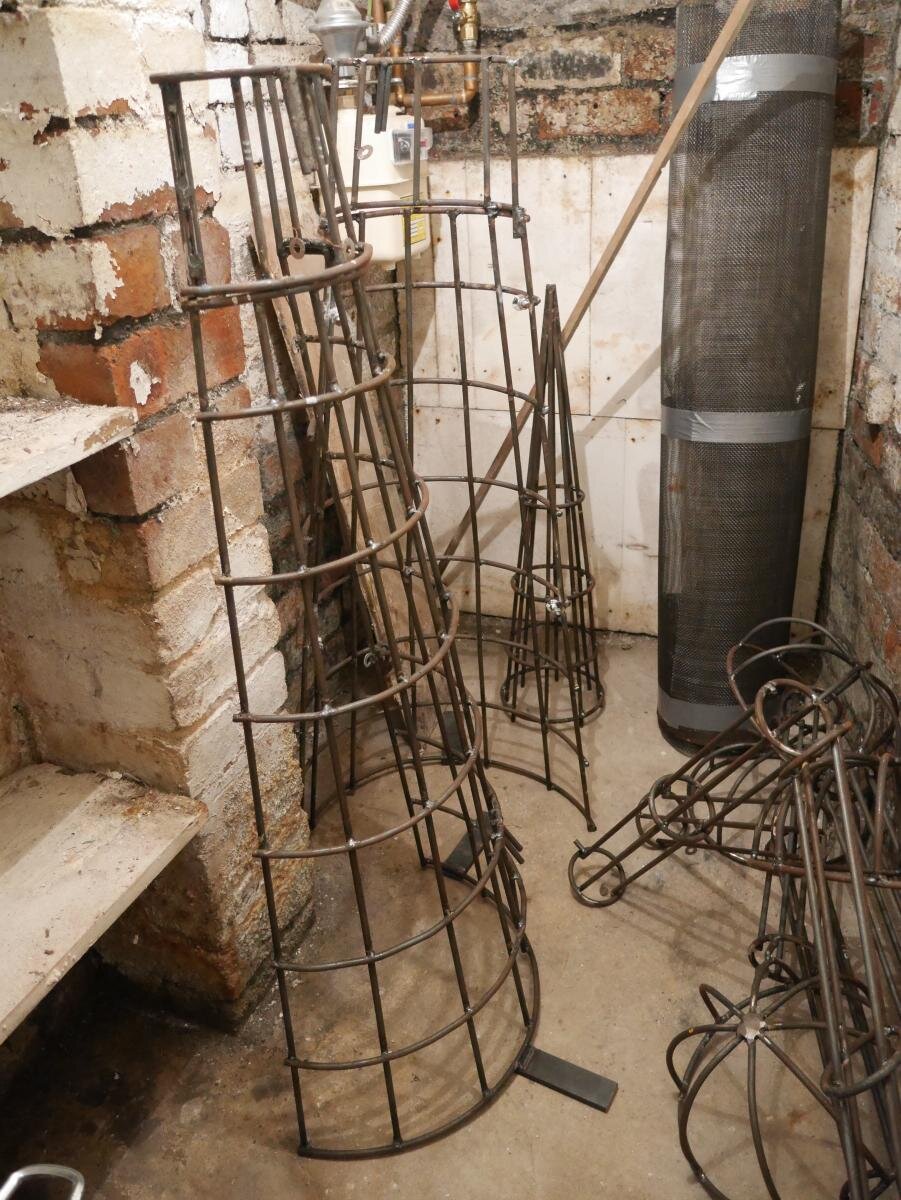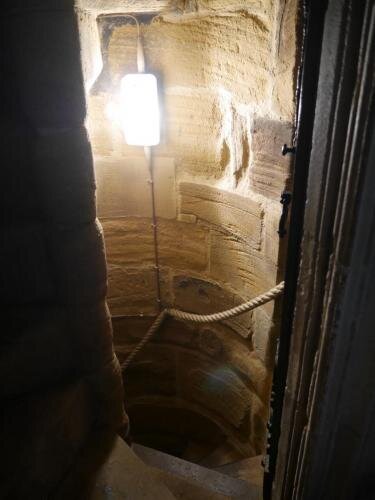Coal Spire
With Coal Spire, a 2 meters high sculpture piece covered in clinker and coal, the artist recreated a local folklore account of a “tower of coal” underneath the Wakefield cathedral.
Part of Clinker, 1984-85, Nicholas Vaughan’s project exploring of the 1980’s mining strike, the piece brings together elements of the fantastic and surreal in a vivid interpretation of the people’s suffering and struggle during the strike. The piece was initially shown in the Crypt of the Chantry Chapel in Wakefield, as Vaughan feels the crypt adds a great contextual element to the experience of the piece: its low ceiling and narrow steps recreate the feeling of descending into the depths of the earth, with the visible spire being, perhaps, just the tip that can be seen above the floor’s stone work.
This piece is complemented by the Novella In Our Veins, that weaves itself around Coal Spire and was written in collaboration with Steven B. Williams and Alexandra Vaughan.
The artist reflects on his chosen materials for this piece and the conceptual process behind it:
"The concept of the Coal Spire piece first came from a story that I read in George Bales book. This described a legendary column of coal that had supposedly existed beneath the cathedral. Research was done at National Coal Mining Museum for England, where this was confirmed. Through research I came upon the material of clinker. I gathered that it had probably been a material that once upon a time not so long ago would have been everywhere. During that whole industrial period when there were belching great factories of steam and coal. The more I read about it the more I became convinced that this was a suitable noxious substance for the construction of the spire. Something that was full of minute chemical reactions and that had undergone vitrification, almost in the same way that a volcanic or magma like rock is formed. The transience of one material to another, from coal to coke, then on and into a clinker. A waste product that is littered with lumps of coal and solder like clumps after the valuable parts had been burnt away.
One of the ‘nests’ contains NCM coal that was collected on a research trip where I dug the coal from the mine face. Whilst there I was told by the director of the museum that one of the exhibits - a coal delivery man’s wagon loaded with sacks of coal - had to be cordoned off as visitors to the museum had been stealing lumps of coal. They must have been doing it as a way of having a keepsake or an heirloom, I thought. As a way of making a connection to their past. ‘Museum value’ is a new way that communities can connect with coal now, instead of the old relationship as a fuel. This is also connected to the international art market making coal that is found at the NCMM more valuable now than it has ever been (possibility to sell coal collected or taken from the museum). This is the way that coalfield communities are reflecting.
Coal was a commodity in 1984 and UK coal deemed not worthwhile extracting, not worth the cost. And today it’s a rarity which makes it more valuable, collectable.
Because we don’t see much coal these days when we do encounter it, it seems as if it might be from another time or place. To get that feeling of other worldliness I have used a resin on the magpie ‘nest’ of coal extracted from the NCMM. It allows the coal to acquire a glittery surface which also gives it the appearance of a material far costlier than coal.
"This piece has been shown in Wakefield at the Chantry Chapel (26th September to the 21st of October 2018) and at SNAPArts (11th of November 2018)











